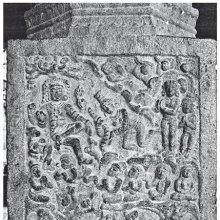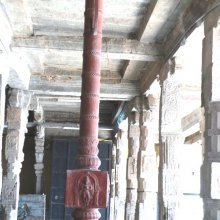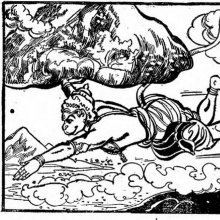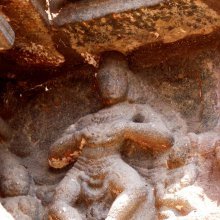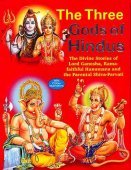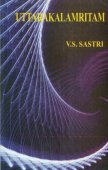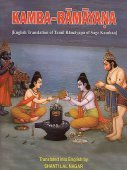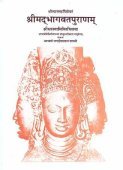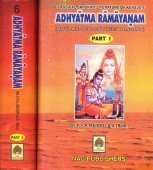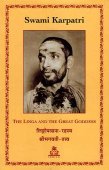Destruction: 2 definitions
Introduction:
Destruction means something in Buddhism, Pali, Hinduism, Sanskrit. If you want to know the exact meaning, history, etymology or English translation of this term then check out the descriptions on this page. Add your comment or reference to a book if you want to contribute to this summary article.
Images (photo gallery)
(+8 more images available)
In Hinduism
Yoga (school of philosophy)
Source: ORA: Amanaska (king of all yogas): A Critical Edition and Annotated Translation by Jason BirchThe Destruction (of the worlds) is denoted by the Sanskrit term Anta, according to verse 10.16 of Sureśvarācārya’s Mānasollāsa.—Accordingly, “By merely his own will, [the Yogin] is the agent of creation, preservation and destruction (anta) of worlds [lokānāṃ sṛṣṭisthityantakartṛtā] and the master of the sun and so on. This is called [the Siddhi of] sovereignty”.

Yoga is originally considered a branch of Hindu philosophy (astika), but both ancient and modern Yoga combine the physical, mental and spiritual. Yoga teaches various physical techniques also known as āsanas (postures), used for various purposes (eg., meditation, contemplation, relaxation).
In Buddhism
Tibetan Buddhism (Vajrayana or tantric Buddhism)
Source: ORA: Amanaska (king of all yogas): (Tibetan Buddhism)The Destruction (of the bonds of existence) is denoted in the Sanskrit language as Nāśana, according to the thirty-third chapter of the Saṃvarodayatantra: a Buddhist explanatory Tantra of the Cakrasaṃvara cycle.—Accordingly, while describing the no-mind meditation: “[...] Free from meditation and concentration and beyond [both] Yoga and reasoning, he leads people to absorption in ‘suchness’, when the mind becomes steady in awareness. It is [e.g., the destruction of the bonds of existence (bhava-bandha-nāśana)] [...] inexpressible by words and even beyond the sphere of the mind”.

Tibetan Buddhism includes schools such as Nyingma, Kadampa, Kagyu and Gelug. Their primary canon of literature is divided in two broad categories: The Kangyur, which consists of Buddha’s words, and the Tengyur, which includes commentaries from various sources. Esotericism and tantra techniques (vajrayāna) are collected indepently.
See also (Relevant definitions)
Ends with: Agent of destruction.
Full-text (+2440): Vinasha, Vilaya, Kshaya, Sankshaya, Pradhvamsa, Vidhvamsa, Pralaya, Nasana, Vighata, Samuccheda, Dhvamsa, Vyaya, Uccheda, Nasa, Kalpanta, Vinashana, Pradhvamsabhava, Dhvamsana, Mahapralaya, Vighatana.
Relevant text
Search found 389 books and stories containing Destruction; (plurals include: Destructions). You can also click to the full overview containing English textual excerpts. Below are direct links for the most relevant articles:
The Tattvasangraha [with commentary] (by Ganganatha Jha)
Verse 2322-2324 < [Chapter 24a - The case for the reliability of the Veda (the Revealed Word)]
Verse 2325-2328 < [Chapter 24a - The case for the reliability of the Veda (the Revealed Word)]
Verse 366 < [Chapter 8 - Examination of the Doctrine of the Permanence of Things]
Vaisheshika-sutra with Commentary (by Nandalal Sinha)
Sūtra 7.2.21 (Priority and Posteriority, how prodiced) < [Chapter 2 - Of Number, Separateness, Conjunction, etc.]
Sūtra 7.1.18 (How Measure or Extension is destroyed) < [Chapter 1 - Of Colour, Taste, Smell, and Touch, and Magnitude]
Sūtra 7.2.10 (Disjunction, how produced) < [Chapter 2 - Of Number, Separateness, Conjunction, etc.]
Brahma Sutras (Nimbarka commentary) (by Roma Bose)
Brahma-Sūtra 2.2.22 < [Adhikaraṇa 3 - Sūtras 18-27]
Brahma-Sūtra 4.1.14 < [Adhikaraṇa 8 - Sūtra 14]
Brahma-Sūtra 4.1.13 < [Adhikaraṇa 7 - Sūtra 13]
Nyayakusumanjali of Udayana (study) (by Sri Ramen Bhadra)
Nyāya view on validity of Veda < [Chapter 2 - The first and second Stavakas]
Arguments against pralaya < [Chapter 2 - The first and second Stavakas]
Defence of pralaya < [Chapter 2 - The first and second Stavakas]
Padarthadharmasamgraha and Nyayakandali (by Ganganatha Jha)
Text 80 < [Chapter 6a - On Qualities]
Text 84: On the Production and Destruction of Colour &c. < [Chapter 6a - On Qualities]
Text 90 < [Chapter 6a - On Qualities]
Maha Prajnaparamita Sastra (by Gelongma Karma Migme Chödrön)
I. Qualities of the sixth superknowledge (āsravakṣaya-jñāna) < [Part 1 - Becoming established in the six superknowledges]
Preliminary note on destroying the traces of the conflicting emotions < [VIII. Destroying the traces of the conflicting emotions]
Part 11 - Why is the Buddha called Buddha < [Chapter IV - Explanation of the Word Bhagavat]
Related products
(+5 more products available)
